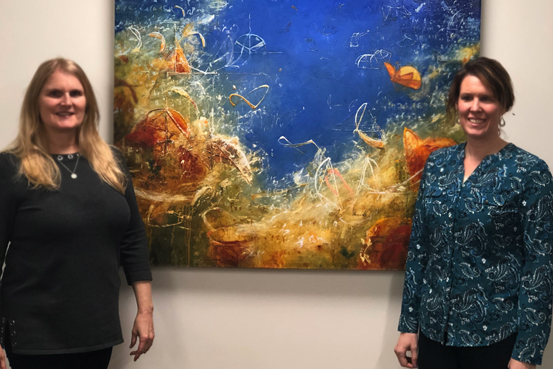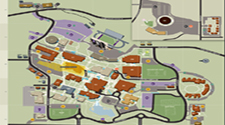The Beauty of Mathematics
March 21, 2019
by Kathryn Van Wagoner, Developmental Mathematics Director
"Mathematics, rightly viewed, possesses not only truth, but supreme beauty - a beauty cold and austere, like that of sculpture, without appeal to any part of our weaker nature, without the gorgeous trappings of painting or music, yet sublimely pure, and capable of a stern perfection such as only the greatest art can show.”
-Bertrand Russell
Mathematicians like to talk about the beauty of mathematics. This beauty is seen in the harmony, patterns, and structures of numbers and forms – classical ideals of balance and symmetry. While experienced mathematicians can envision tangible representations of notations made on a page, mathematical beauty is not so well accessed by the non-mathematician.
The non-mathematician often appreciates the beauty of mathematics without realizing it. Have you ever felt a sense of awe while admiring a flower or a tree? Or been deeply attracted to a piece of art? Favored a specific type of architecture? The beauty that attracts your eye is made possible by and can be explained by mathematics. Trees, paintings, and buildings are made up of mathematical structures that please the eye. The Greeks believed there to be three elements of beauty: symmetry, proportion, and harmony. The perfect balance of these elements created the Golden Mean, which was found repeatedly in nature and was aspired to in art and architecture.
Mathematics has always been a practical and essential element of the creation of art. Conversely, art can be found in and created through mathematics. The faculty of the Developmental Math department at Weber State University recently sought to emphasize the beauty of this relationship between mathematics and art when choosing a piece to display in their reception area.
The piece, titled Pilots of Archimedes, is a 48” x 48” acrylic on canvas, painted by Seattle-based artist Michael Schultheis. His work has been described as "scribbled notations of equations with their tangible, geometric representations, that rotate and mutate across the plane, sometimes looking like exquisitely colored petals, flowers, butterflies, or leaves." His art creates a portal through which the inexperienced mathematician can connect with the art. Pilots of Archimedes is inspired by the works of Archimedes, Gottfried Leibniz, and Isaac Newton.
For Michael Schultheis, all is mathematics. Schultheis explored many forms of art before coming to understand that his only choice was to paint what he knew. What he knew, and loved, was mathematics. Much of modern mathematical art is generated on a computer, but Schultheis “sees life and the world in terms of geometry, and presents that vision in paintings that we can find beautiful without needing to be mathematicians ourselves.”
The public is welcome to view Pilots of Archimedes in the Tracy Hall Science Center. The Developmental Math office in TY 207 is open Monday – Friday 8:00 am to 4:00 pm. Parking is available in the visitor lot east of the pond. For more information, call 801-626-7585.
Sources: “Mathematics in the Mind’s Eye: Michael Schultheis Paints Poetic and Conceptual Geometries” by Patricia Grieve Watkinson; and www.MichaelSchultheis.com
More Works of Michael Schultheis
Office hours
Semesters
Monday - Thursday:
6:30 a.m. - 11 p.m.
Friday: 6:30 a.m. - 10 p.m.
Saturday: 6:30 a.m. - 6 p.m. Sunday: Closed
Holidays & Breaks Hours may vary
Mailing address
Weber State University
College of Science
1415 Edvalson St., Dept. 2501
Ogden, UT 84408-2501

